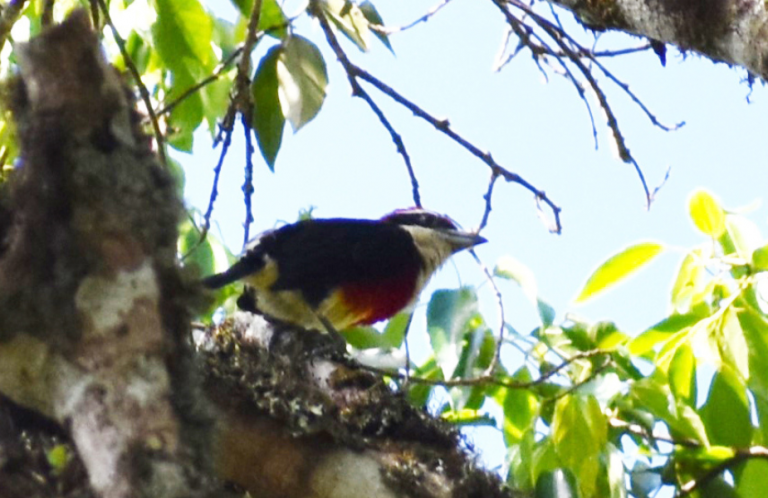Trail Camera Photos Reveal Wildlife Secrets
The history of trail camera pictures likely dates back to the early 1900s, when former U.S. Congressman George Shiras rigged a camera and explosive magnesium-powder flash to string and rope trip lines. Today, tiny infrared motion sensors, compact flashes, and digital technology allow modern camera traps to keep an unblinking eye on shy wildlife.
Producing both stills and video, day or night, camera traps are now essential equipment for conservationists monitoring — or trying to locate — rare, elusive species. They're also handy all-seeing eyes that catch poachers or marauding introduced predators in action. Readily available and inexpensive, camera traps also thrill backyard wildlife aficionados, while web cams bring wildlife to the masses.
Below, we share 11 trail camera pictures that reveal the hidden life of birds and other wildlife.
1) Sira Curassow
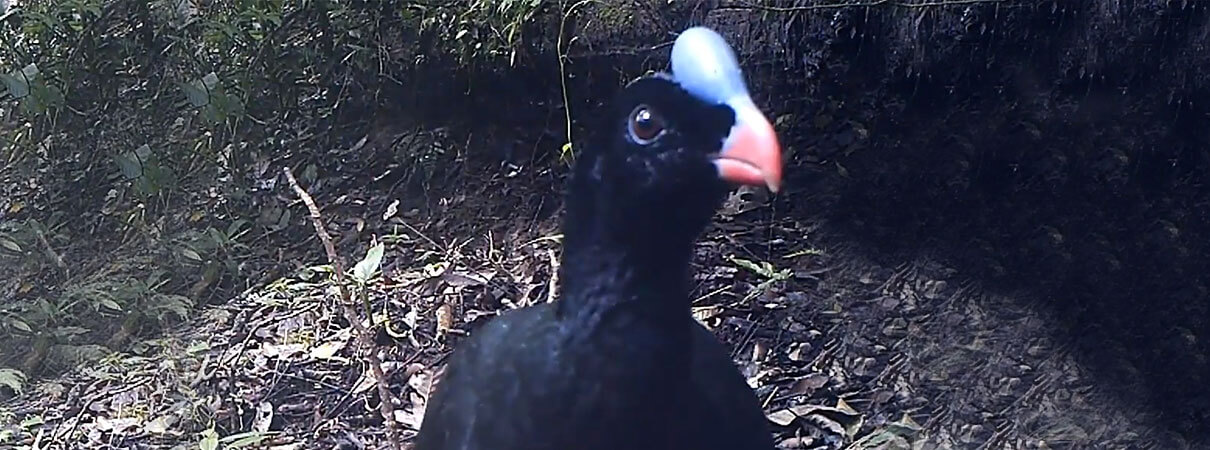
Sira Curassow. Photo by Exploration Sira
A team of British and Peruvian scientists documenting the unique flora and fauna of Peru's Cerros del Sira range relied upon 22 carefully placed camera traps to find skittish species, including the first-ever camera-trap footage of the Critically Endangered, 3-foot-tall Sira Curassow in 2015. ABC supported Exploration Sira, providing funding for field equipment and other expedition costs.
2) Harpy Eagle
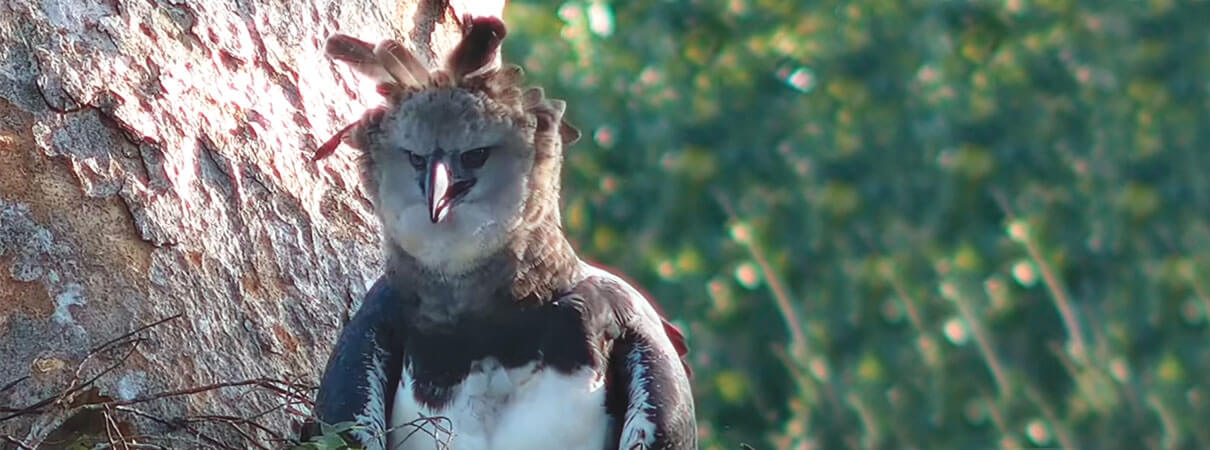
Harpy Eagle. Photo by Rainforest Expeditions
The first-ever Harpy Eagle cam in 2017 transmitted rare footage from a camera rigged 90 feet up in a massive rainforest tree. Put online by Rainforest Expeditions and the focus of a nesting behavior study by San Diego Zoo Global and Wired Amazon, it followed the progress of a Harpy Eagle nest at Tambopata, Peru. From late June to December, a downy white hatchling gradually transformed into a full-sized immature bird, taking her first flights from the nest. She flourished on a parent-supplied diet of howler and squirrel monkeys, sloths, and other prey.
3) Rufous-vented Ground-Cuckoo
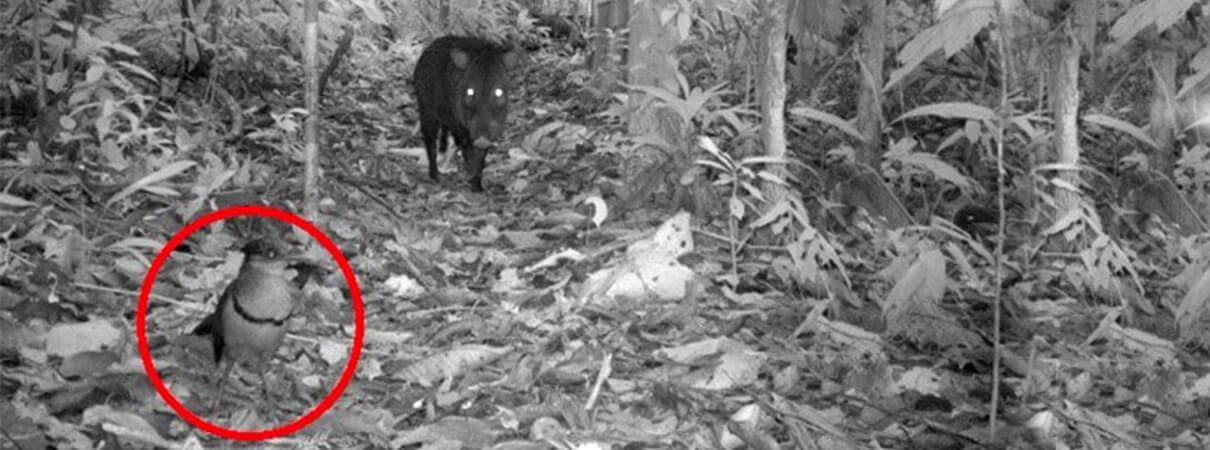
Rufous-vented Ground-Cuckoo. Photo by Amazon Conservation Association
Even though it looks like a gaudy jungle roadrunner, the Rufous-vented Ground-Cuckoo is very hard to find and poorly known. Enter a camera trap, set up in the Peruvian Amazon by Renzo Piana of the Amazon Conservation Association and his colleagues. This image is part of a series that documents — for the first time — this species following a Collared Peccary. (Ground-cuckoos were already known to follow White-lipped Peccaries, which travel in larger herds.) This large cuckoo tails peccaries as they root around on the forest floor, stirring up insects and other small creatures, as well as fallen fruits. The bird's alarm calls possibly alert peccaries to predators.
4) Great Kiskadee
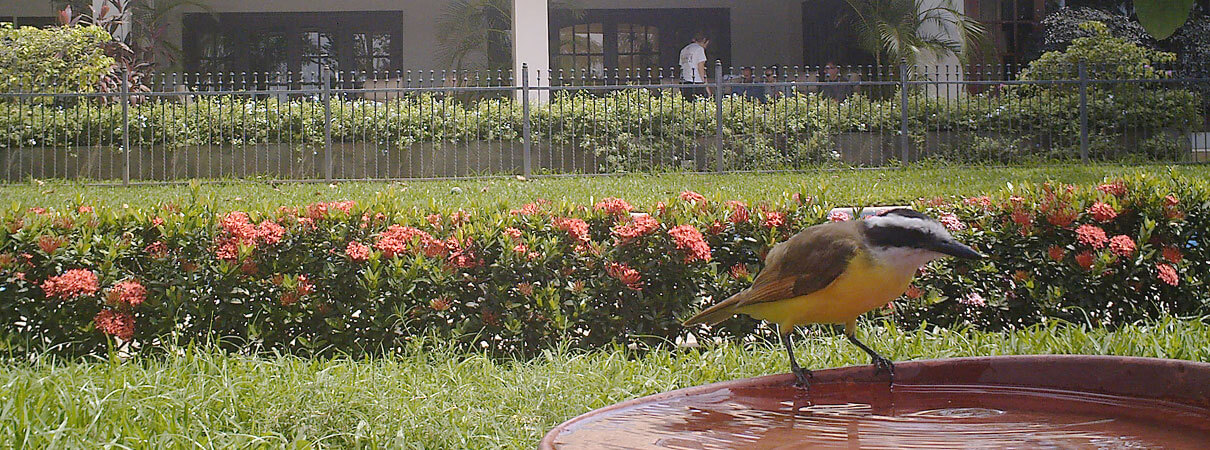
Great Kiskadee. Photo by Thomas Youth
A camera trap rigged by a 13-year-old at his Nicaragua home captured this bird's-eye view of a Great Kiskadee visiting a bird bath. Resident from southern Texas to central Argentina, this boldly colored flycatcher catches the attention of birders and non-birders alike. Camera traps like these provide backyard naturalists the chance, day or night, to record sightings of birds and other wildlife neighbors they otherwise might miss.
5) Feral Cat and Hawaiian Petrel

Feral cat and Hawaiian Petrel. Photo by Kaua'i Endangered Seabird Recovery Project
In this image, a feral cat drags an adult Hawaiian Petrel from its nest burrow. Cats are a persistent threat to this species and other rare, slowly reproducing seabirds. ABC and its partners in Hawai'i rely upon camera traps to alert them to the presence of introduced predators, including cats, rats, and mongooses. Such footage helps them to site locations for active management; for example, identifying where to install predator-free enclosures.
6) Atlantic Puffins
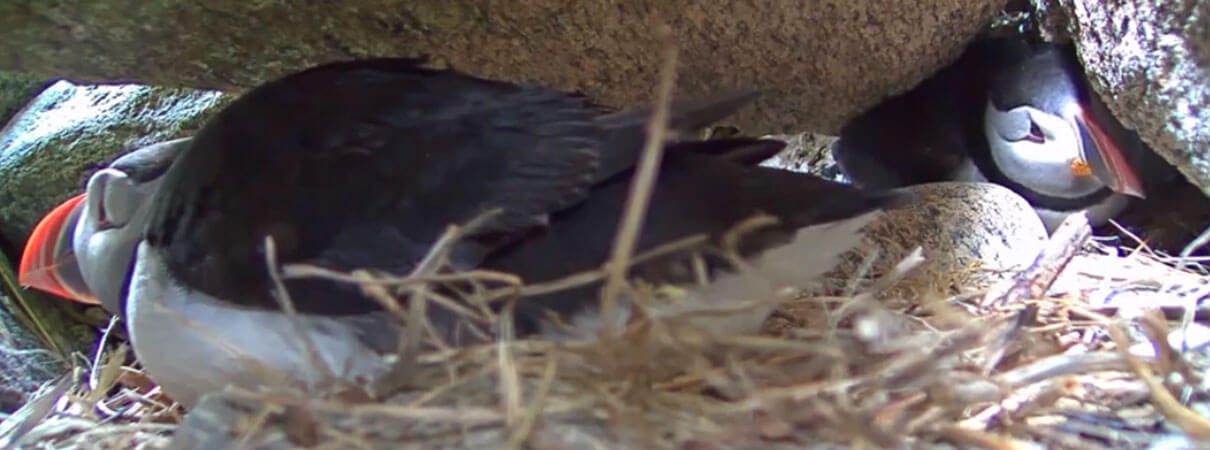
Atlantic Puffins. Photo by explore.org
“Atlantic Puffins like you've never seen them” might be a tagline for this web cam, which takes viewers to Seal Island National Wildlife Refuge in Maine, directly inside a puffin nesting site. The background chorus of fussing terns is occasionally punctuated by the puffin's moaning call, which sounds like a far-off chainsaw or a lowing cow. Atlantic Puffins lay one white egg, which both parents take turns incubating for up to 30 hours at a stretch. Another web cam covers a “loafing ledge,” where the birds congregate. Seal Island is one of the sites where the National Audubon Society's Project Puffin has supported the return of Atlantic Puffins to islands off the coast of Maine.
7) Giant Anteater

Giant Anteater. Photo by Asociación Armonía/Glasgow University
Known in Spanish as oso hormiguero gigante, or giant ant bear, the Giant Anteater roams both grassland and forest, flicking its 2-foot-long tongue to gather up to 30,000 ants and termites a day. This adult and its young were snapped in Bolivia at the Barba Azul Nature Reserve via a camera trap set by a visiting Glasgow University team, there to survey the reserve's wildlife. Among the other photogenic species caught in action: Puma, Pampas Cat, Ocelot, Marsh Deer, and Maned Wolf. Barba Azul Nature Reserve is run by Asociación Armonía (Armonía), ABC's Bolivian partner. In 2008, ABC helped Armonía create the Barba Azul Nature Reserve to reverse the decline of the Critically Endangered Blue-throated Macaw and to restore the once-degraded landscape. In 2014, ABC and other supporters helped to double the reserve's size.
8) Collared Aracaris
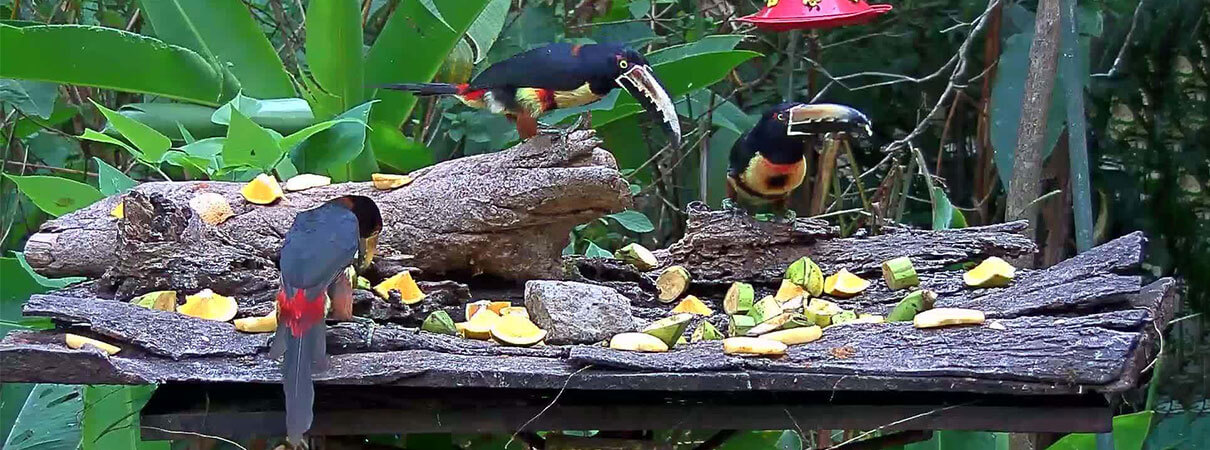
Collared Aracaris. Photo by Canopy Lodge, Panama
The Cornell Lab of Ornithology, Canopy Family, and explore.org maintain a web cam at the Canopy Lodge in Panama, where viewers can enjoy wild birds — including these Collared Aracaris — coming for bananas, oranges, and papayas. Other feeder birds regularly sighted, both on the camera and by lodge visitors: Gray-headed Chachalacas, Chestnut-headed Oropendolas, Red-crowned Woodpeckers, Flame-rumped Tanagers, Thick-billed Euphonias, Rufous Motmots, Gray-cowled Wood-Rails, omnipresent Clay-colored Thrushes, and others. The web cam allows viewers world-wide to view these wild birds, no doubt enticing some to visit Panama.
9) Great Blue Heron

Great Blue Heron. Photo by Chesapeake Conservancy
Close human presence can cause Great Blue Herons and other wading birds to abandon rookeries, but this web cam, run by the Chesapeake Conservancy, lets people follow the nesting activity at a rookery on Maryland's Eastern Shore without stressing the birds. By posting the herons' private nest life online, the Chesapeake Conservancy hopes to inspire viewers to better understand North America's largest heron and work to protect its habitat, both in and beyond the United States' largest estuary.
10) Spectacled Bear
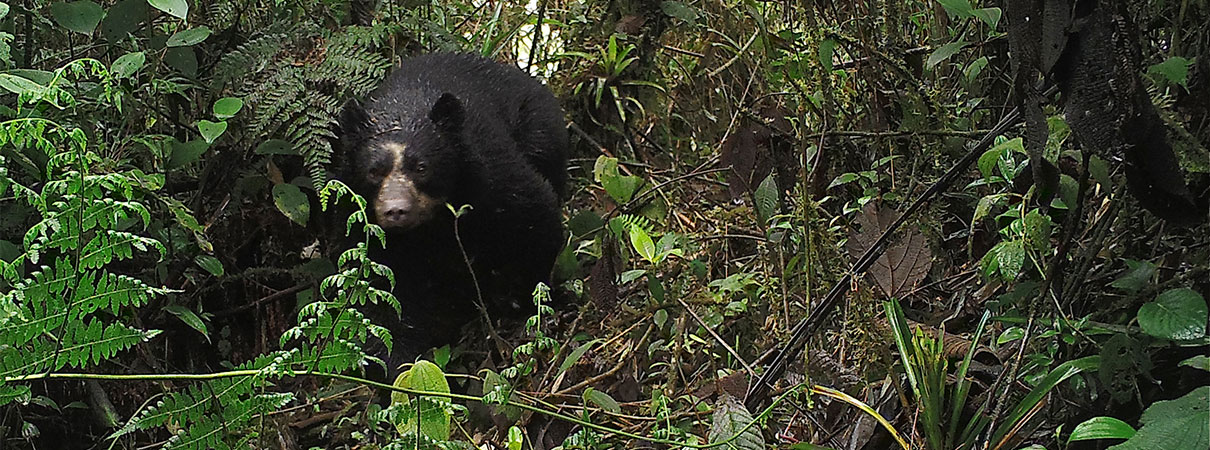
Spectacled Bear. Photo by Fundación Jocotoco
ABC's Ecuadorian partner Fundación Jocotoco deploys camera traps to monitor Spectacled Bears at several of its reserves. The traps enable scientists to monitor the animals, document their young, and watch for poachers who might slip in and hunt wildlife. This adult bear was “captured” wandering through its cloud forest home at the ABC-supported Tapichalaca Reserve.
11) Violet-crowned Hummingbird
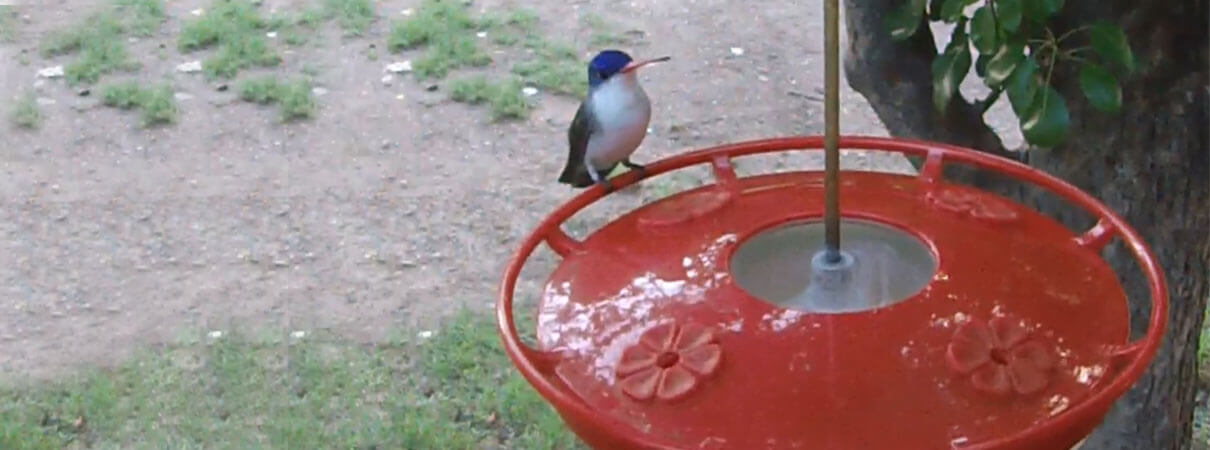
Violet-crowned Hummingbird. Photo by Paton Center for Hummingbirds, Arizona
At the Tucson Audubon Society's Paton Center for Hummingbirds in southeastern Arizona, birders flock to one of North America's top places to see the localized Violet-crowned Hummingbird. Today, even if birders can't make it there, they can still watch the birds in real time via a live feeder web cam. ABC supported this reserve's creation in 2014, after Marion and Wally Paton, who welcomed birders to their home for decades, passed away. The Paton Center continues as a living tribute to the couple and their love of birds.
 | Howard Youth is ABC's Senior Writer/Editor, and is the author of Field Guide to the Natural World of Washington, D.C. |








































